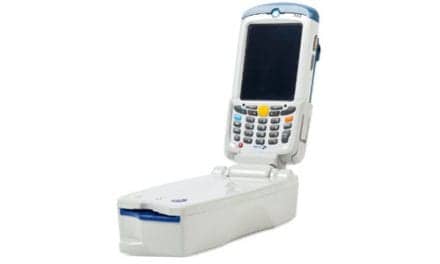When biotechnology companies were first considered “hot,” one of their exciting promises involved point of care (POC) medical diagnostic devices. But companies trying to manufacture these devices grappled with high production costs that finally made many of the devices impractical at that time. Disgruntled investors looked elsewhere.
Now perhaps POC’s time has come. A number of biotech diagnostic devices offering rapid, cost-effective, and accurate testing are approaching market launch. At least one of these is designed to analyze arterial blood gases (ABG) at the point of care.
The microfluidics chip, also known as the laboratory on a chip, is making such devices commercially feasible. Microfluidics is the result of the melding of several disciplines, including chemistry, biology, engineering, information technology, and the semiconductor industry. One result is a plastic, disposable chip capable of running an ABG analysis on the blood from a finger stick, and at one tenth of the cost of current POC arterial blood gas analysis methods.
Researchers originally produced microfluidics chips by building the electronics on a silicon base, using a process very similar to that used in the production of computer semiconductor chips. However, although the process works, in practice it is prohibitively expensive.
When disposable plastic is used as the substrate, the chips can be mass-produced, dramatically decreasing units’ costs. In much the same way that newspapers are printed on a huge roll of paper, chips can be mass-produced by cutting channels into a sheet of substrate using ultraviolet light, a process called photolithography. The sheets are then laser-cut into individual chips, the appropriate reagents are added, the chips are loaded into a pick and place device that puts the desired chips into an array, and the array is built into the device. Although the chips are small (and still shrinking), they employ the same reagents used in the tabletop machines to test arterial blood. It is the identical test, shrunken down via microfluidics, and made economical through mass production.
The RCP or technician will take a finger-stick blood sample from the patient and put it into the device. Alternatively, another version of the device will be able to continuously monitor the patient’s arterial blood gases. The blood flows over the chip, running through microchannels into cups that act as minute test tubes, where reactions produce tiny electrochemical charges that can be read using an inexpensive millivolt meter. The practitioner then reads the results, ejects the sample holder, and puts in a fresh chip for the next patient.
Does it work? This technology has been tested on a large-animal model, using continuous ABG monitoring. When blood samples were simultaneously run on a standard ABG machine and through this device in the continuous mode, the results matched perfectly. Further testing is now taking place, and continues to be encouraging.
This device, expected to be on the market within 2 years, will offer an accurate POC ABG, at one tenth of the cost of current POC ABG tests. It also promises to decrease the time spent running samples to the laboratory, freeing the RCP to devote more time to patient care. N
Valerie A. Kellogg, RRT, AAS, MA, MBA, is the principal market analyst at Kellogg & Associates, Bloomfield, NY, and specializes in international medical and biotech market research.








